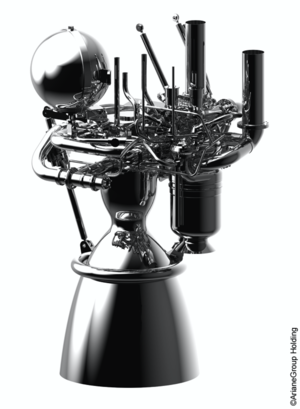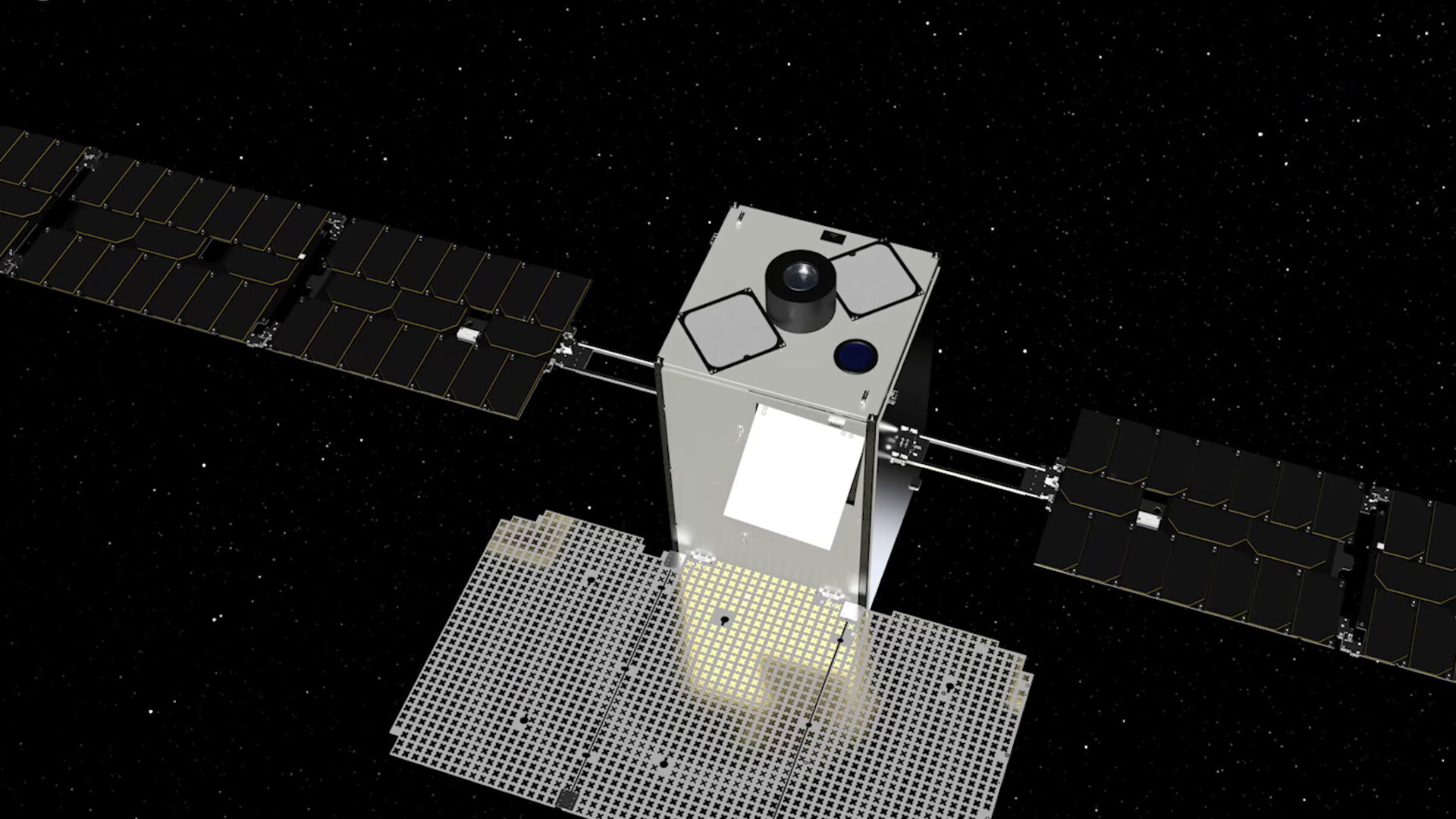M-Argo: Journey of a suitcase-sized asteroid explorer
A new video follows M-Argo on its three-year journey from Earth, through deep space, to its destination – a small, spinning asteroid 150 million kilometers away.
When M-Argo launches, it will be the smallest spacecraft to perform its own independent mission in interplanetary space. The Miniaturised Asteroid Remote Geophysical Observers (M-Argo) spacecraft will rendezvous with an asteroid to characterise its shape, the mass and to see what the surface is made up of, for example minerals that might be useful as future resources.
Why was this asteroid chosen?
The M-Argo team screened over 700,000 possible targets before settling on a list of over 40 asteroids that are reachable within the propulsion capabilities of this small spacecraft when it launches, anytime in 2024 or 2025. Then, the team selected a shortlist of five different asteroids, which differ in size, spin rate, distance from Earth as well as fuel the amount of required to reach them. The final selection will be made nearer to launch, but all five targets are small near-Earth asteroids of less than 100m in diameter. Such small asteroids have never been visited before and not much is known about their physical properties. M-Argo will therefore return new data about this type of object, as well as identifying any in-situ resources present for future extraction..
At just 36.5cm wide on its longest side, the miniature CubeSat contains numerous technologies that will help conduct these investigations, but also to orient and position the satellite, as well as send any information it gathers back to Earth. These technologies have to survive their journey through the harshest deep space conditions, before working perfectly. The video pinpoints these technologies, many of which have had to be developed or miniaturised, but what exactly will each of them do?
Reaching the asteroid
Many future small spacecraft missions in deep space have been conceived with a mothership spacecraft nearby, helping them to reach their destination and communicate with Earth, but M-Argo is truly independent. Because of this, M-Argo needs its own propulsion system, using technologies normally made for much larger spacecraft. In the video, we see the planned launch (expected in 2024-25) with the satellite hitching a piggyback ride out of Earth’s orbit, before detaching from the launcher and tumbling through space. Here it deploys its reaction control thrusters – twelve tiny gas jets on the corners of the CubeSat used to detumble and stabilise its orientation.
Developing a propulsion system that could deliver the fuel efficiency and thrust needed to propel the CubeSat through interplanetary space, and a way to store fuel, without exceeding the space or mass requirements of such a small craft is a challenge.
Eventually an electric propulsion system was chosen, with an ion engine powered by the large steerable solar array, seen on the video using information from the sun sensor to rotate and track the sun, to power the CubeSat on to its asteroid target, leaving a glowing blue xenon plume in its wake.
Gathering data
We follow the M-Argo spacecraft on its journey through several different orbits before it reaches its destination, where, for six months, it will collect data in a repeating two-week pattern, made possible by flying M-Argo close to the asteroid on its sunniest side.
As it flies, the CubeSat will intermittently use tiny manoeuvres by the electric propulsion system to keep it on a passively safe path relative to the asteroid. As this path brings it closer to the asteroid, navigation and radio science will be performed. This includes ground-based navigation (similar to that used in the Rosetta mission) to generate the correct manouvering commands, together with on-board attitude determination using the Star-Trackers, which will improve and correct the direction the instruments are aiming at.
Once M-Argo reaches its closest point, the multispectral imager and laser altimeter will conduct science observations, before it moves away again. The multispectral imager works as a type of camera, capturing image data from across the light spectrum, from visible to infrared. The laser altimeter, which is only slightly larger than a 1 Euro coin, will help to build a 3D map of the asteroids terrain by bouncing laser pulses off of the surface at the speed of light, and recording how quickly they return.
Communicating with Earth
All of the data from these instruments is then returned to Earth using a specially designed X-band transponder and high-gain, flat-panel antenna (called a reflectarray), capable of communicating with the already existing ESA-operated ‘Estrack’ 35-m ground stations, with the potential to be backed up by Italy’s larger 64-m diameter Sardinia Radio Telescope for a greater data return.
M-Argo’s success will pave the way for sending a fleet of low-cost small spacecraft, perhaps 10 to 20 CubeSats at a time, to scout different asteroids and build up a wide survey of our near-Earth neighbours.
The mission is supported through Element 3 of the Agency’s General Support Technology Programme (GSTP), augmented with other companies across Europe as the project moves into the Preliminary Design phase.















 Germany
Germany
 Austria
Austria
 Belgium
Belgium
 Denmark
Denmark
 Spain
Spain
 Estonia
Estonia
 Finland
Finland
 France
France
 Greece
Greece
 Hungary
Hungary
 Ireland
Ireland
 Italy
Italy
 Luxembourg
Luxembourg
 Norway
Norway
 The Netherlands
The Netherlands
 Poland
Poland
 Portugal
Portugal
 Czechia
Czechia
 Romania
Romania
 United Kingdom
United Kingdom
 Slovenia
Slovenia
 Sweden
Sweden
 Switzerland
Switzerland

























